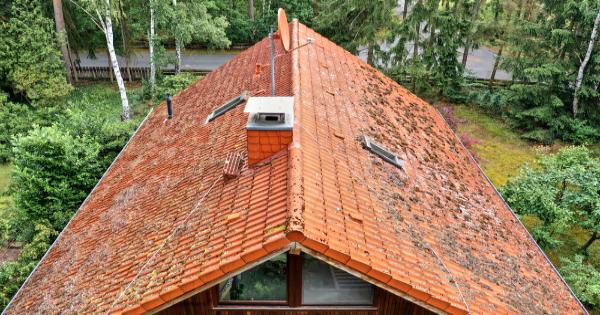5 Ways to Identify When a Roof Goes Bad

By Quarrix.
What to look for and ways to inform your customers about roof maintenance to identify when it’s time to replace their roof.
Many people think that the age of their roof determines when it’s time to have it replaced. However, it largely depends on the climate in which your customer lives, the type of material they chose for their roof and how they have maintained it over the years. As the seasons change and adverse weather events occur, damage is commonplace for roofs no matter how old they are and what they are made of, leading to telltale signs that the roof needs replacing. Here are five common signs to look for when inspecting a roof that you can share with your customers.
1- Curled or cracked shingles
Shingles are designed to protect a roof from the elements, but even they can only take so much. Shingles can be damaged by snow, ice, hail, excess heat and other seasonal weather. Thankfully, damaged shingles are easy to spot. Unless you just experienced a major storm though, it’s not always clear what is causing the shingles to deteriorate. Shingles may curl if they weren’t installed properly, and cracking can happen naturally as shingles age. But these can also be signs of larger problems. For example, if there is poor ventilation in an attic, moisture and excess heat can accumulate there, which in turn may cause shingles to curl. When assessing a roof, pay close attention to the state of the shingles, especially if the roof is past or approaching 20 years old.
2 - Bald spots from missing granules
As shingles age, they tend to lose some of their granules, much like a tree shedding its leaves in fall. And just like fall leaves, you may find those granules piling up in your customer’s gutters. This is a sure sign that the roof is nearing the end of its life cycle. You may also be able to spot bald patches on their shingles where the granules have worn away. These will be marked by inconsistent and often darker colored spots on the shingles.
3 - Sagging
If the roof is sagging, your customer more than likely has a serious problem on their hands. You may notice this either from the outside where you see a dip in the roof line, or inside where the roofing material is bowing into the attic. In most cases, a sagging roof line is an indication that moisture has seeped into the roof system. At the very least, you’ll likely have to replace some shingles, and in a worst-case scenario, you may need to take on a whole roof remodeling project.
4 - Dark streaks
Dark streaks on a roof can appear for a number of reasons, some much more serious than others. For example, the streaks may be caused by a buildup of algae, which is no threat to the roof and can be washed away fairly easily. They may just be an indication of where moisture tends to accumulate or where the roof receives the most direct sunlight, but the streaks could also be caused by water damage, in which case, your customer could have a serious problem. Take a closer look at the shingles, and make sure to do an interior check as well. If you find dark streaks on the underside of their roof in the attic, it’s likely water damage and will need to be repaired.
5 - Moss
In the forest, moss can point the way north. But on a roof, it only points to potential problems. Moss and algae growth on the roof is often a sign that the roofing materials are retaining moisture, and more moisture usually means a shorter roof life. If you do see moss or algae on your customer’s roof, it can be washed away, just make sure you don’t damage the shingles underneath. If it comes back within a month or two, it might be time to take a look at the attic ventilation.
Not every roof needs to be replaced. Remind your customers that regularly checking their attic, seasonal roof checkups, and assessing roof damage after major storms can help prolong the life of their roof. However, sometimes a roof naturally reaches the end of its useful life. If the latter is in your customers near future, contact the specialists at Quarrix and we’ll match you with durable products that can withstand everything Mother Nature throws at them.
Learn more about Quarrix in their RoofersCoffeeShop® Directory or visit quarrix.com.
Original article source: Quarrix























Comments
Leave a Reply
Have an account? Login to leave a comment!
Sign In